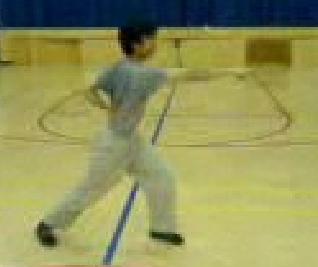
Originally Posted by
Scott

Here's mine. I don't think Wing Chun is an internal system, based off a collection of facts and experiences.
1) Other internal stylists definetly think that Wing Chun is externally based, using jing power rather than internal buildup of chi to execute the moves. This could probably be discounted, though, because what does a Bagua man know about Wing Chun? But still worthy of consideration.
2) Historically, not counting the Yim Wing Chun LEGEND (it may be true, but we know that Wing Chun was in existence over 200 years before Yim Wing Chun was alive. However, she probably did make the system famous and rename it after herself. Wing Chun is a system probably made to teach groups of peasants how to fight in a short amount of time--this explains why 80% of the training involves two people--you're teaching two people something at the same time, which is faster and leads to actual combat skills in shorter amounts of time.
Also, Wing Chun was made presumably with the idea of cutting out uneconomical moves from traditional southern styles--internal styles are mostly comprised of moves that seem uneconomical when compared to 'combat reality' moves. I think the people who created Wing Chun were probably seen much as we see combat realists/MMA people in our times.
3) Most of ideas regarding Wing Chun as an internal style seem to branch from the first 6 moves of Sil Lim Tao, which are done extremely slow. When asked why it is done so slow, many people assume it is done slow for the same reasons Tai Chi sets are done slow (and they are at about the same pace,) which is to collect and store and cultivate Chi. Well, this isn't necessarily the case--and even seems unlikely, since there are no other slow moves in the entire system.
A more plausible explanation is that in Sil Lim Tao, you are learning the very basics of Wing Chun, and thus the base that all the rest of your knowledge stems from. If you learn to perform all of your moves perfectly from the start, you will have a strong foundation on which to base your skills. Now, think again. Why are the punches done 3 times, slow motion, and then 3 more at the end? Which move are you most likely to be doing the most in your Wing Chun career? The straight punch is the heart of Wing Chun, coming from the centerline to your opponent's centerline--the poetic basis of Wing Chun--Heart to Heart.
Look at the other slow moves--(their chinese names escape me, so I will use English descriptions to explain them) the tan sau, the hand ridge block (god, why can't I remember it's Chinese name? =P I know I know it,) and the hooking block. TThe hand ridge block and the Tan block and the hooking hand block are three of the four root blocks, from which every other Wing Chun block is based off of. The only block not present in these three moves that comprises one of the root blocks is the Bong Sau, which sort of makes sense, since the Bong Sau has no other blocks which resemble it--it sort of stands alone. The slow returning ridge hand block builds up arm strength, and once again it is teaching you the EXACT positioning for the blocks so that your base for learning Wing Chun is strong.
Those are my points. What points are there that support Wing Chun as an internal system?
-Scott
"Life is hard, but so am I." -- The Eels.






 Reply With Quote
Reply With Quote









